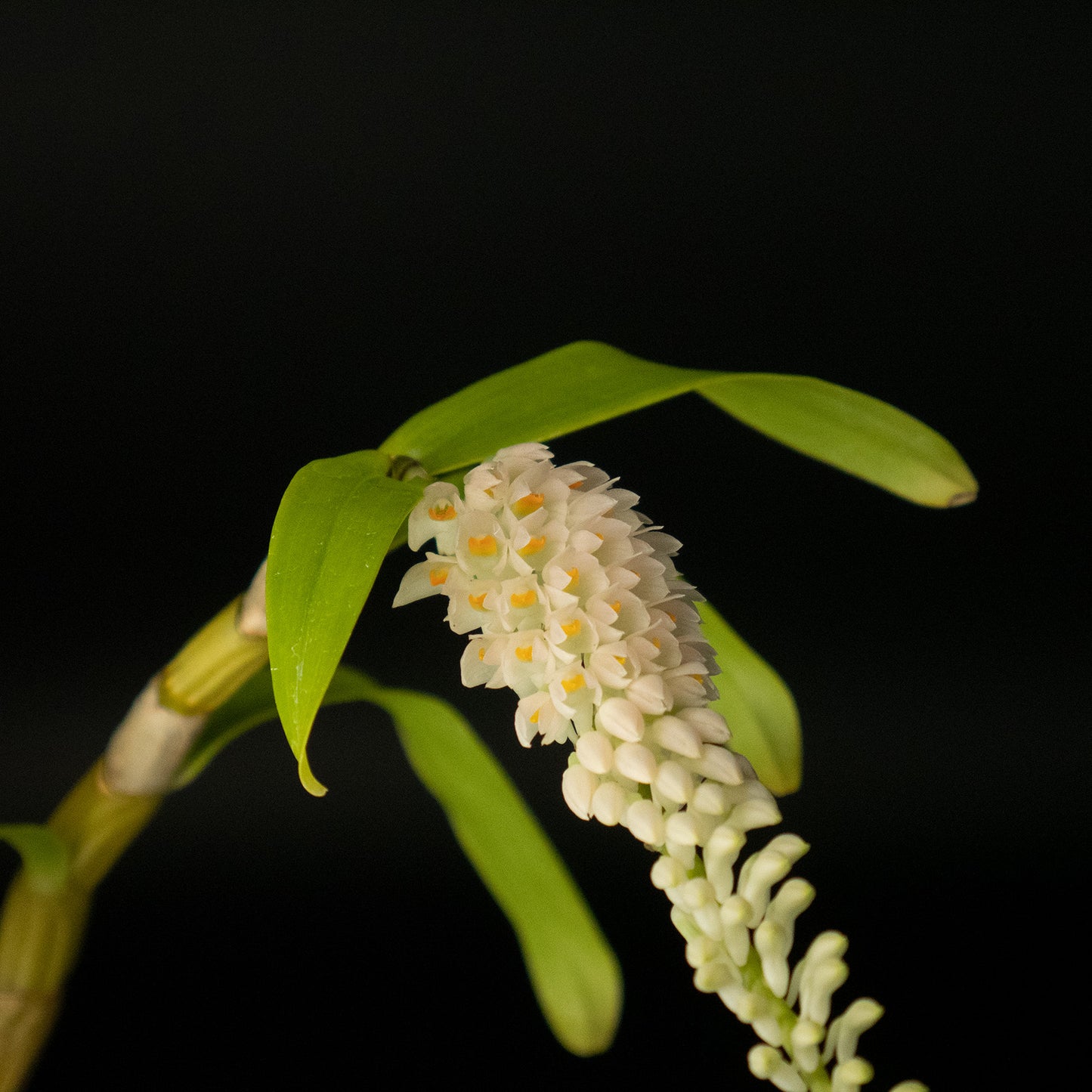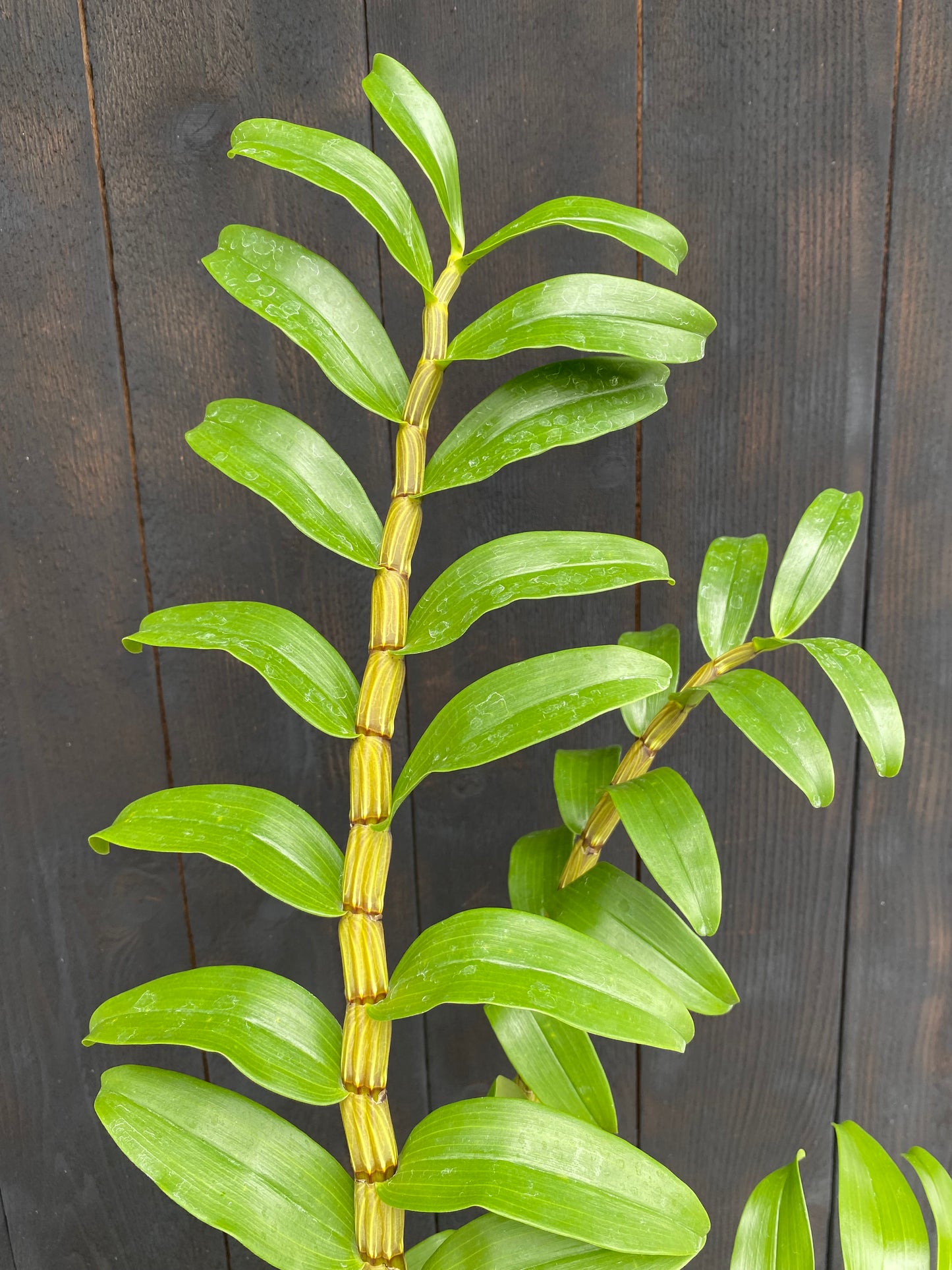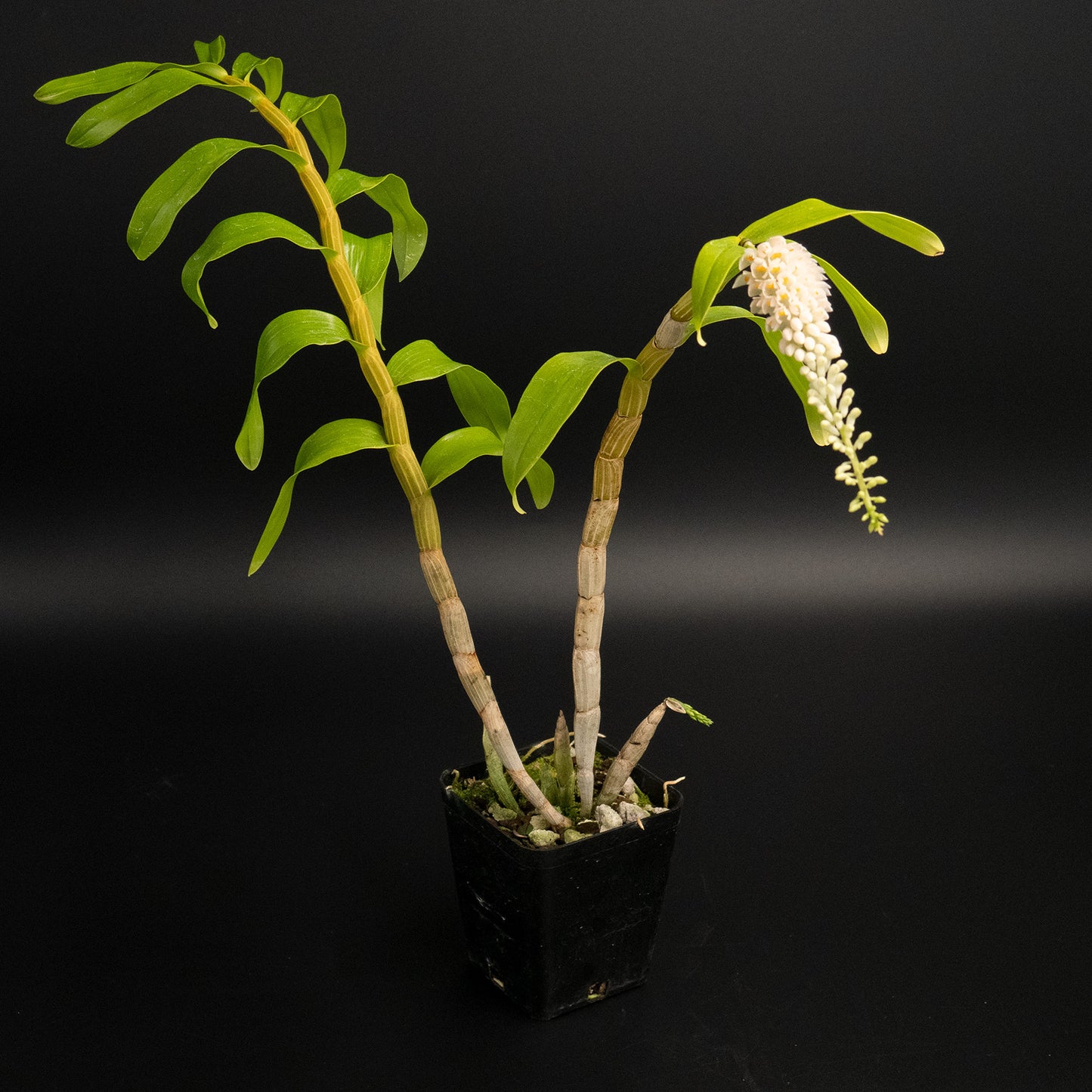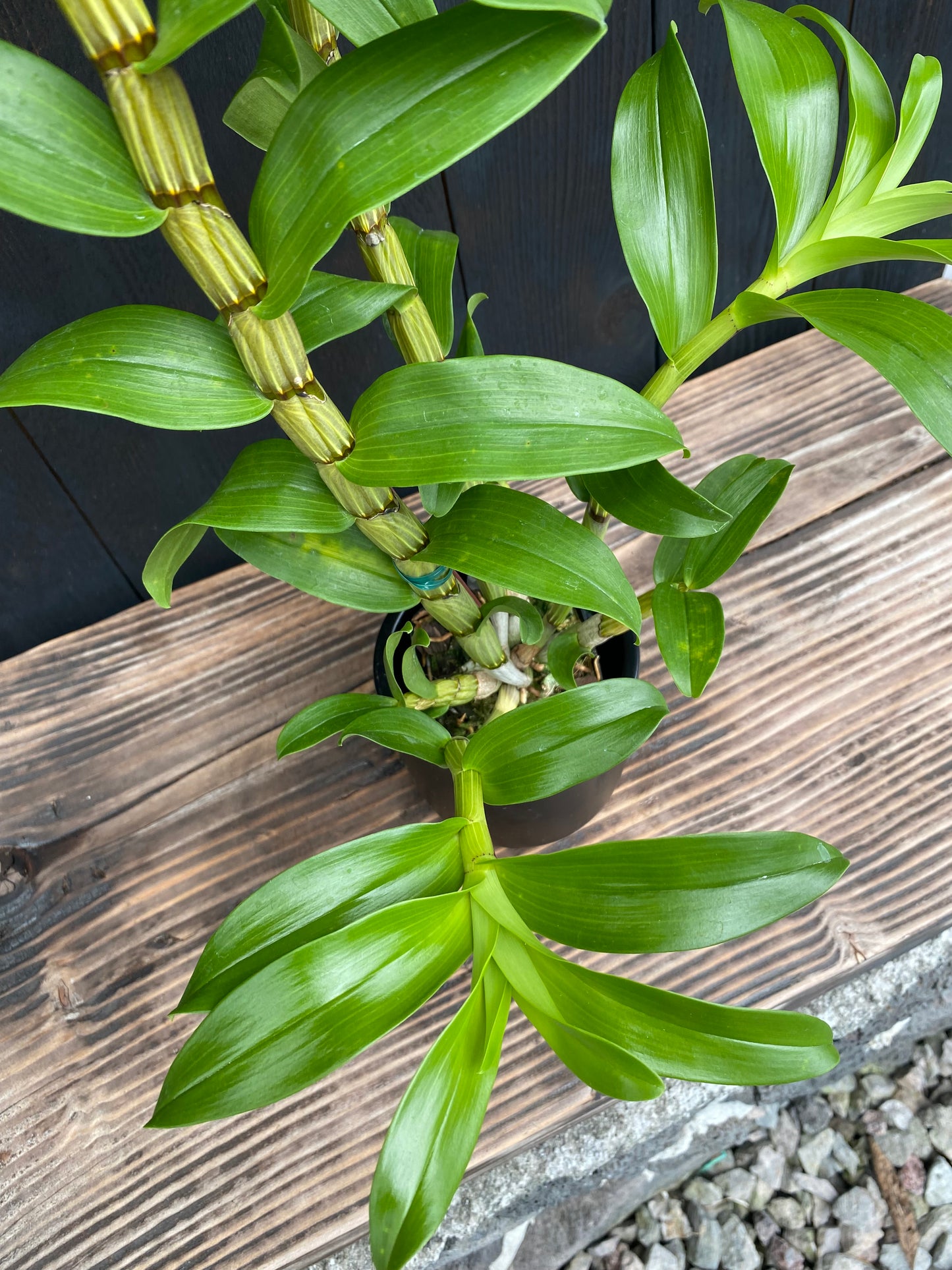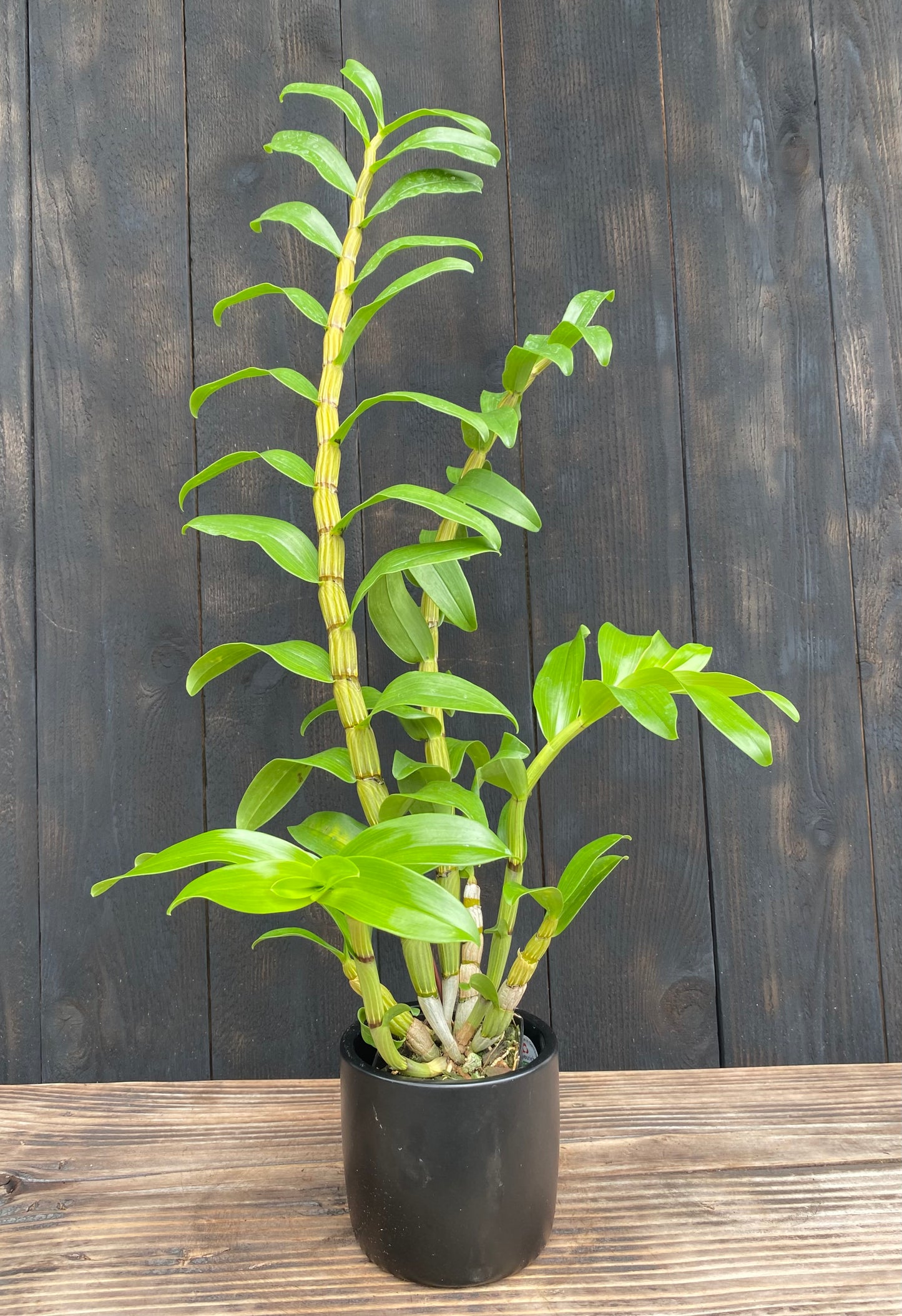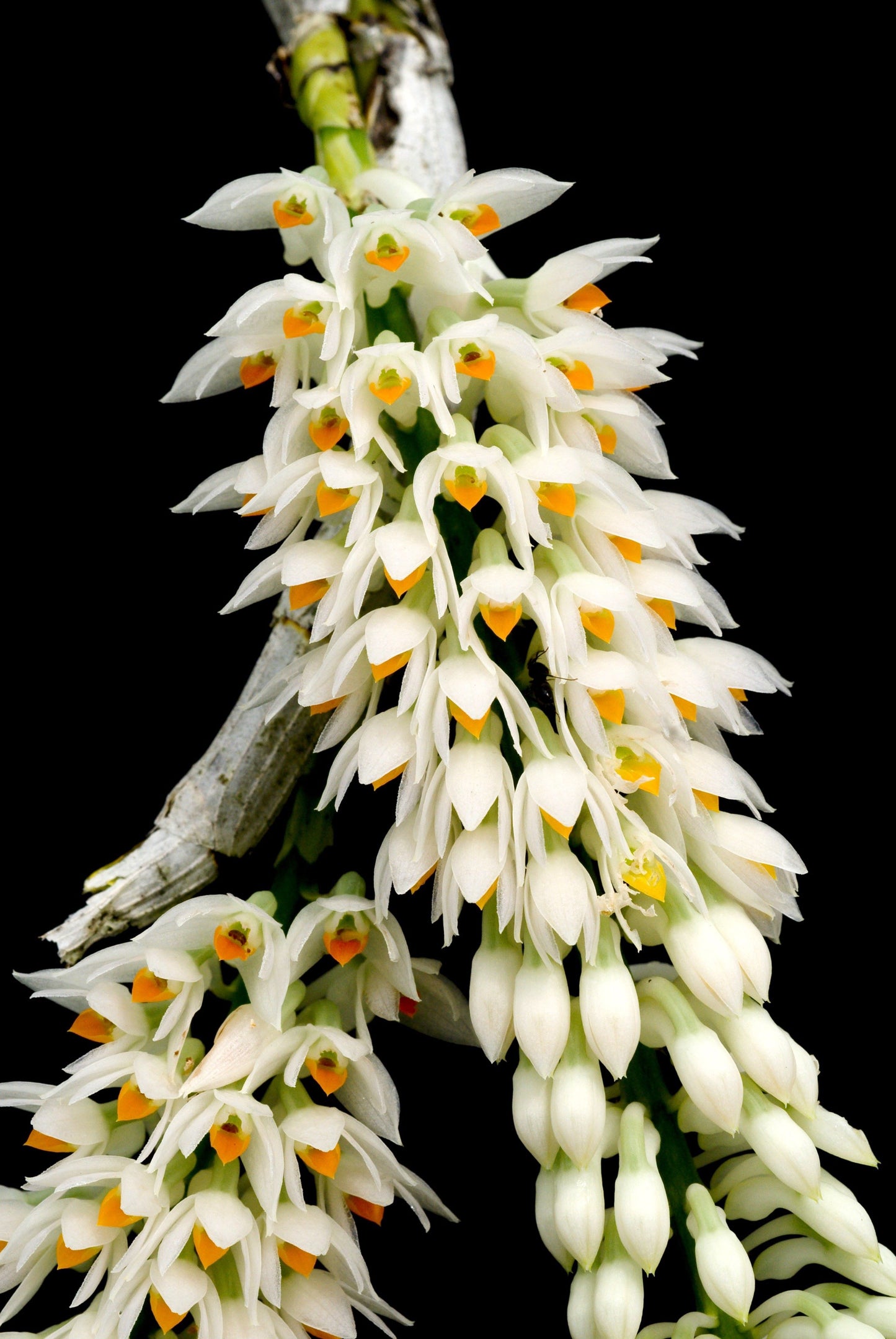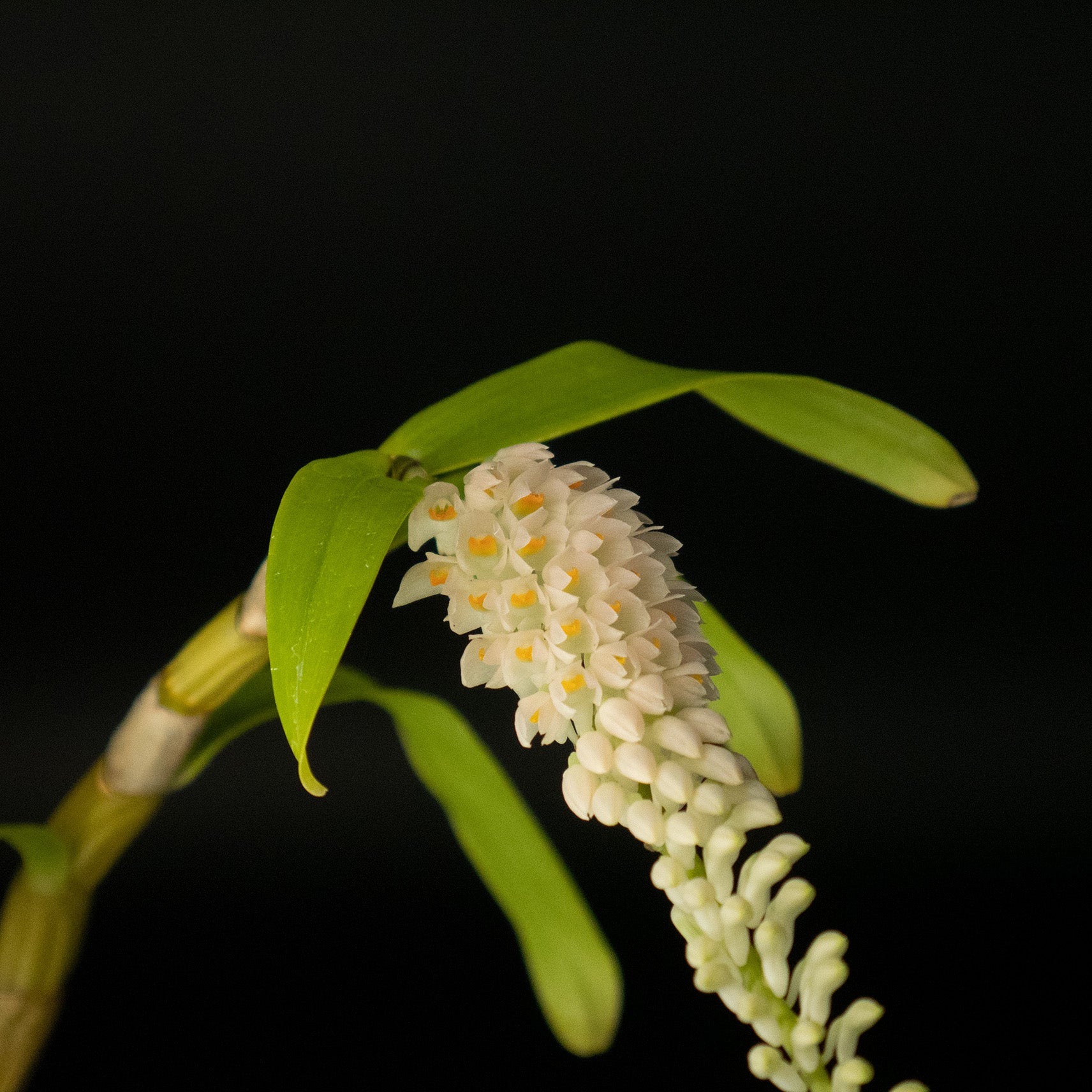Kalapana Orchid Farm
Den. secundum (alba x red)
Den. secundum (alba x red)
Couldn't load pickup availability
Dendrobium secundum (se-KUN-dum)
This one is affectionately known as the "Toothbrush Orchid," and it takes just one look to see why. The flowers are all neatly arranged on one side of the gracefully arching flower spike, perfectly aligned like the bristles of a toothbrush. It's nature's peculiar sense of order on full display. Each inflorescence is densely packed with dozens of small, waxy flowers, typically a shocking, vibrant white (alba), magenta or fuchsia-pink. The tiny, tubular lip provides a brilliant pop of contrast, often tipped in a blazing orange or yellow, beckoning from within the floral ranks. It’s a spectacular sight, with mature plants capable of producing numerous spikes that transform the leafless canes into wands of pure, electric color.
Quick Start
Light: Bright, filtered light. 2,500–3,500 foot-candles (≈27k–38k lux). Similar to Cattleya.
Temps: Warm. Days 80–90°F (27–32°C); Nights 65–70°F (18–21°C). Requires a slightly cooler, drier winter rest.
Water: Drench and dry during active growth. Reduce watering significantly in late fall and winter.
Humidity: 50–70% with good air movement.
Fertilizer: Use a balanced fertilizer at ½ strength weekly during growth; stop entirely during the winter rest.
Media: Mount on cork or tree fern, or pot in a very coarse, fast-draining mix (large bark, charcoal, lava rock).
🌺 Orchid Lore & Discovery
The name secundum is Latin for "one-sided" or "following," a direct and fitting description of its unique floral arrangement. This species is widespread across Southeast Asia, found from the Himalayas through Thailand, Malaysia, Indonesia, and the Philippines. It thrives as an epiphyte, clinging to tree trunks in lowland and lower montane forests up to about 4,000 ft. Its habitat is defined by distinct wet and dry seasons, a rhythm this orchid has deeply internalized.
Dendrobium secundum is part of a group of dendrobiums that flower from older, leafless canes. The plant stores energy in its club-shaped, or fusiform, canes, which can reach up to 3 ft. in length. After a period of active growth, it drops its leaves and, following a crucial dry winter rest, erupts with its signature one-sided flower spikes from the upper nodes of these bare canes. This strategy ensures its blooms are presented unobstructed, creating a truly dramatic display in its native environment.
🌿 How to Grow Dendrobium secundum
Light
Provide bright, indirect light. An east-facing window or a location with dappled sun is ideal. The leaves should be a healthy medium green; yellowish leaves indicate too much light, while dark green suggests not enough to initiate blooming.
Temperature
This is a warm-growing orchid that loves heat and humidity during its growing season. Maintain daytime temperatures of 80–90°F and nights around 65–70°F. For flowering, a winter rest period with slightly cooler nighttime temperatures (around 60°F / 15°C) is beneficial.
Water
Watering is critical and follows a seasonal cycle. From spring through summer (active growth), water heavily, allowing the medium to approach dryness between waterings. In late fall, as growth ceases, drastically reduce water. During winter, provide only enough water to prevent the canes from shriveling excessively—perhaps a light misting or a quick watering every few weeks. Resume normal watering when new growth or flower buds appear in spring.
Humidity
Provide 50–70% humidity. In a drier home environment, a humidity tray or humidifier can be helpful. Good air circulation is essential to prevent fungal issues, especially in high humidity.
Fertilizer
Feed regularly during the active growing season. A balanced orchid fertilizer at half-strength applied weekly is effective. Stop all fertilizer by late fall to allow the plant to harden its new canes and prepare for its winter rest.
Media
This orchid’s roots demand excellent drainage and aeration. Mounting on cork, tree fern, or a sturdy branch is the most natural method and nearly guarantees healthy roots. If potting, use an exceptionally coarse, open medium like large-grade fir bark, lava rock, and charcoal in a clay pot with ample drainage holes. Repot only when necessary, as it dislikes root disturbance.
Share
